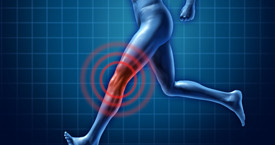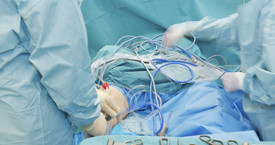Welcome to OmahaKnee.com, your #1 Source for Knee Information in Omaha, NE.
Meet Dr. Darren Keiser
As a board-certified orthopedic surgeon in Omaha, Nebraska, I specialize in all aspects of orthopedic care. One of my specialties is the knee.
My aim through this website is to educate you regarding this commonly injured area of the body. I encourage you to actively participate in your care. Here, you will find explanations about knee anatomy, knee function, and dysfunction that will help you through the decision-making and treatment process. It will be to your benefit as you move toward recovery.
I have performed several-thousand knee procedures in my career, ranging from knee arthroscopy to knee replacement.
My goal is to help you overcome all of your knee pain and to restore your knee mobility, function and strength (through the most advanced form of treatment) as quickly and painlessly as possible.
If you are having any trouble with your knees, I invite you to allow me to assist you! Thank you for taking the time to visit and for allowing me to serve you!
Knee Conditions and Treatments
Knee problems are very common. Almost everyone at some point or another in their lives has problems with their knees.
When learning about the knee, it is advantageous to understand knee anatomy first.
The knee joint is comprised of bones, ligaments, tendons, menisci, and cartilage. The bones that make the knee include: the thigh bone (femur), the lower leg bone (tibia), and the knee cap (patella). The ligaments of the knee that help with knee stability include the ACL, the PCL, the MCL, and the LCL. The tendons of the knee that help with movement include the patellar tendon, the quadriceps tendon, and the hamstring tendon. The cartilage of the knee is the white glossy coating on the ends of the bones that provides a smooth gliding surface for joint movement. The menisci are the two c-shaped cushions in between the femur and the tibia.
Any one of these anatomical structures can be damaged through traumatic injury, repetitive overuse, or through the wear and tear of life.
Many knee conditions can be treated properly and successfully without surgery. These treatments may include Protection, Rest, Ice, Compression, Elevation (PRICE), bracing, physical therapy, injections, and medications. Sometimes surgery is necessary to eliminate pain, restore strength, stability, and movement, and to prevent further breakdown of the knee.
Some common knee conditions that are explained on this website include: ACL tears, meniscal tears, cartilage defects, kneecap pain (patellofemoral pain), and arthritis.
Some common knee procedures include: ACL repair, meniscus trimming or repair, cartilage restoration procedures, and total knee replacement.
Please browse through the patient information in this website. I especially invite you to view the knee animations.
I expect that you will find them to be quite helpful!
For detailed information on other orthopedic conditions, please visit Keiser Orthopedics. For detailed information on the shoulder, please visit Omaha Shoulder.




